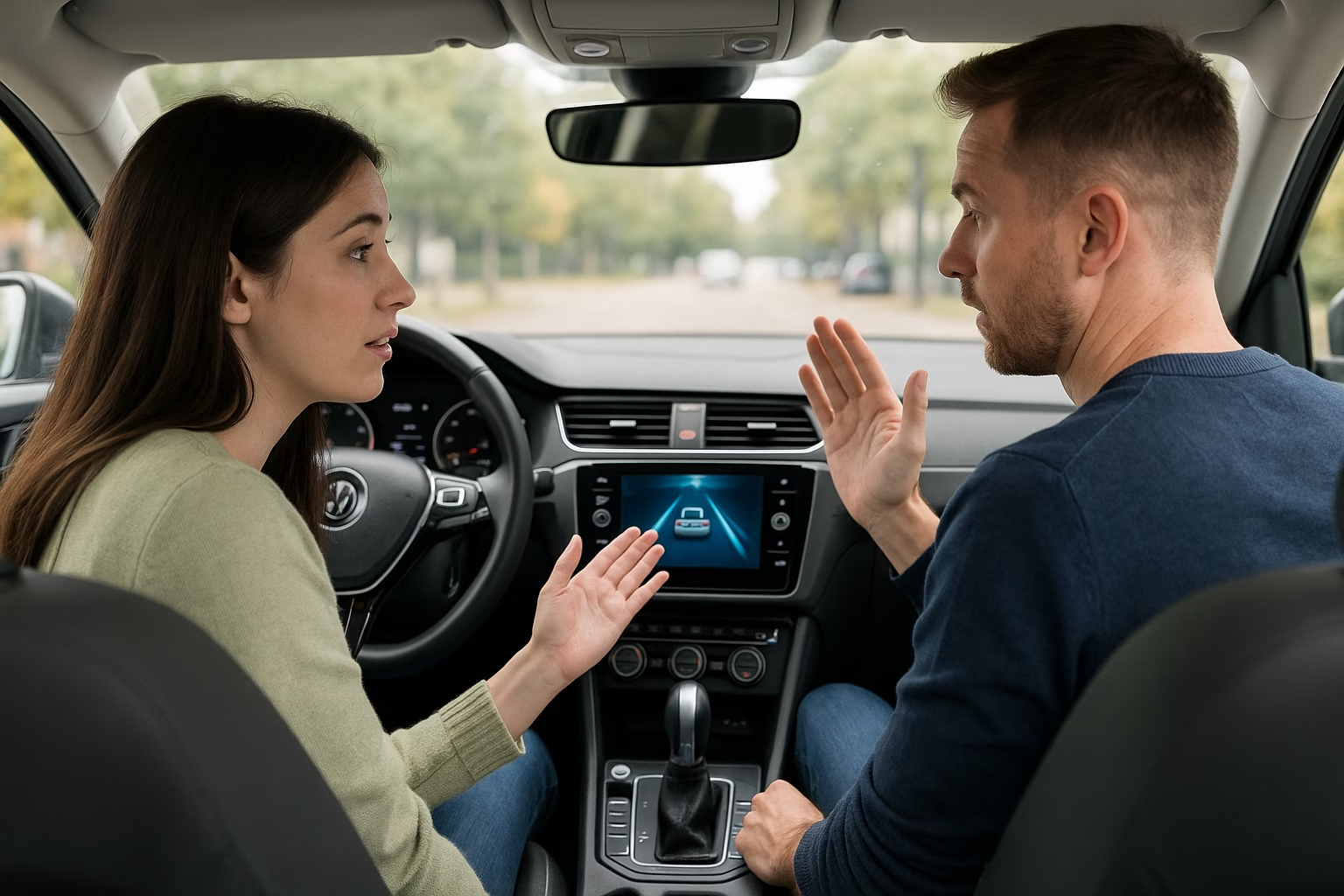Many drivers are excited about advanced driver assistance systems, but when you share your car with a partner or teach a teenager to drive, those same features can cause confusion. If someone isn’t familiar with lane keeping assist or adaptive cruise control, they might fight the car’s steering corrections or panic when the brakes engage on their own. Teaching your loved ones how to interact with ADAS helps them feel confident and keeps everyone safe. This friendly guide explains how to introduce ADAS to passengers and novice drivers without frustration.
Start with a clear explanation
Before you set off, take a moment to explain what systems your car has and what they do. Highlight that features like adaptive cruise control, lane keeping assist and blind spot monitoring are there to help, not take over. Explain that the car may lightly steer or apply the brakes to maintain distance or stay centred in the lane. Knowing what to expect reduces the urge to grab the wheel when the car nudges itself back on course.
Show how to recognise alerts
Modern cars use icons, sounds and vibrations to warn you about potential hazards or system status. Point out the symbols for lane departure, adaptive cruise control and forward collision warning on the instrument cluster. Let your partner or child hear the audible alarms in a controlled setting. By recognising these alerts, they are less likely to be startled or assume something is wrong when the system engages.
Emphasise that ADAS is assistance, not autopilot
It’s important to set realistic expectations. Advanced driver assistance systems can reduce fatigue and help prevent accidents, but they are not designed to replace you. Encourage your partner or child to keep their hands on the wheel and eyes on the road at all times. When they understand that they are still in charge, they will be less likely to fight the car’s gentle corrections.
Practice together in a safe area
Find a quiet road or empty parking lot where you can demonstrate how the systems work without pressure. Show how adaptive cruise control maintains distance from a lead vehicle and how it disengages when you press the brakes. Activate lane keeping assist and deliberately drift toward a lane marking so they can feel the steering wheel push back. Let them try it themselves so they know how the car will react. Practising in a low-stress environment builds trust and reduces anxiety later.
Discuss how to override the system calmly
There will be times when you need to turn off or override an assistance feature, such as in a construction zone or on a narrow country road. Show where the buttons or menu options are to disable lane keeping or adjust the sensitivity. Emphasise that you can always take back control by steering firmly or pressing the brake pedal. Encourage them not to panic if the car beeps or vibrates; instead, respond calmly and deliberately.
Teach proper hand position and steering
A common way people “fight” the car is by gripping the steering wheel tightly and making sudden corrections. Remind your partner or child to hold the wheel lightly at the nine and three o’clock positions. This allows them to feel the steering assist working without overreacting. If lane keeping engages, they can let the system nudge them back into the lane rather than pulling against it. Explain that relaxed, smooth steering inputs make driving easier whether assistance is active or not.
Address fears about sudden braking
Automatic emergency braking and adaptive cruise control can slow the car unexpectedly, which might scare an inexperienced driver. Explain that these systems use sensors to detect slow or stopped traffic and will apply the brakes if you don’t react. Demonstrate by approaching a stationary object at low speed and letting the system intervene. Talk about how to maintain a safe following distance and avoid tailgating so the system doesn’t need to step in as often.
Encourage questions and feedback
Invite your partner or child to ask questions about what the car is doing. If they feel something unusual, encourage them to describe it rather than grabbing the wheel or shouting. Listen to their concerns and adjust the systems if needed. For instance, some cars let you change the distance setting on adaptive cruise control or the strength of the lane keeping assist. Tailoring the experience can make them more comfortable.
Set boundaries for young passengers
If you have younger children, make it clear that they should never touch the steering wheel, gear lever or buttons while the car is moving. Kids are naturally curious and may be tempted to “help.” Explain that the driver needs to stay focused and that surprise inputs can be dangerous. Provide them with other ways to participate, such as watching for speed signs or talking about road rules. Teaching respect for the driver’s role will pay dividends when they become drivers themselves.
Lead by example
Your own behaviour shapes how others react to ADAS. If you complain about the systems or turn them off without explanation, your partner or child may become sceptical. Instead, model how to use them properly. Praise the technology when it helps, and calmly explain when it makes a mistake. Show that it’s okay to take over and that the goal is to use assistance as a tool, not as a crutch.
Adjust for different drivers
Remember that everyone has their own comfort level with technology. A tech-savvy teenager might embrace adaptive cruise control quickly, while an older relative could take longer to trust it. Adjust your pace accordingly. You can start with basic features like blind spot monitoring and gradually introduce more complex ones as they gain confidence. Celebrate small milestones, such as successfully using lane keeping on a quiet highway, to build positive associations.
Review the manual together
Every vehicle has slightly different controls and capabilities. Spend some time reviewing the owner’s manual or the built-in digital guide with your partner or child. Highlight where to find information on ADAS settings, warning messages and limitations. Knowing where to look for answers can reduce frustration later.
Remember the human factor
Ultimately, the most important lesson is that the driver remains responsible. ADAS can be a great ally, but it cannot read your mind or predict every situation. By teaching your partner or kids how not to fight the car, you equip them to use technology safely and effectively. With patience, clear explanations and hands-on practice, you can turn confusing beeps and nudges into helpful tools that make shared driving more pleasant for everyone.

Hiran Alwis is an automotive lecturer and ADAS specialist with over 15 years of experience in diagnostics, advanced safety systems, and technical training. He founded ADAS Project to help everyday drivers and workshop technicians understand and safely use advanced driver assistance systems.
